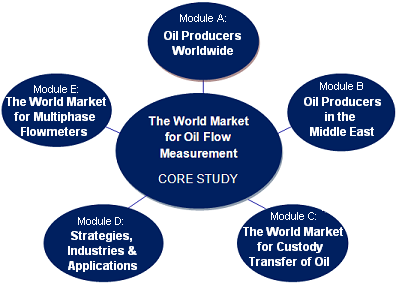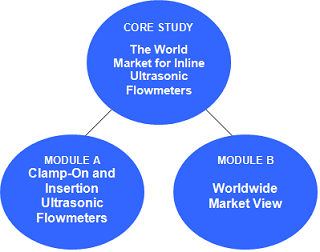| www.FlowTimes.com | www.FlowResearch.com |
welcome to
FlowTimes
- November 2012
Your
Update on Flow, Temperature, and Pressure Measurement from Flow Research
Executive Editor: Dr. Jesse Yoder; Volume 13, Number 4 - ISSN
1350-7204
1. Letter from the President: Around the World in Eleven Days
In Jules Verne’s
classic book, Around the World in
Eighty Days, Phileas Fogg makes a bet that he can travel around the
world in eighty days. Rather
than bother with long preparations, he actually sets out on his trip the
same day he makes the bet, saying he would buy his clothes along the way.
He plans to follow this route around the world:
·
·
·
Mr. Fogg has some very interesting adventures on his trip, and the book makes a fascinating read.
 |
I
was reminded of this book recently when I was asked to give the
keynote speech at the Flow and Measurement Forum in
Perth, Australia.
In planning my itinerary, I found it beneficial to follow the
example of Phileas Fogg and go east the entire way.
Of course, Phileas Fogg didn’t have the advantage of
airplanes – the book is set in 1872, which was 140 years ago.
But instead of flying east through Dubai and then on to
Perth, Australia, and then returning through Dubai and back to New
York, I found that I could save ten hours on my flying time by
continuing east from Perth. So
my route looks like this, with a 5-day stopover in ·
·
·
·
Total miles: 24,840 By continuing east
from |
A
Lot has Changed in both Travel and Flow
Obviously a lot has
changed in the world of travel since 1872.
Air travel has largely displaced travel by rail and steamship,
especially for long distances. A
lot has changed in the flowmeter world too.
While differential pressure and turbine meters dominated flow
measurement in the first half of the 1900s, since that time a number of
new technologies have been developed that have become quite popular with
flowmeter users. These include
magnetic, ultrasonic, Coriolis, vortex, and thermal flowmeters.
Of these, the most popular and successful are Coriolis and
ultrasonic meters.
Coriolis
and Ultrasonic Flowmeters Have the Wind at
their Back
Coriolis and ultrasonic
flowmeters are the two fastest growing flowmeter technologies. There are a
number of reasons why they are so much in demand by end-users:
1.
Both ultrasonic and Coriolis
meters are highly accurate and reliable at a time when accuracy and
reliability are becoming more important to end-users.
2.
Neither meter has moving parts,
apart from the vibration of the Coriolis sensor tube.
3.
Ultrasonic meters cause
virtually no pressure drop, while bent-tube Coriolis meters can cause some
pressure drop. However,
straight tube Coriolis meters cause virtually no pressure drop
4.
Both meters can readily measure
gas and liquids, although Coriolis meters have some difficulty with gas.
5.
Ultrasonic meters can handle
almost any line size, and they are widely used in pipeline applications
for custody transfer of natural gas. Coriolis meters have traditionally
been limited to line sizes of six inches and under, but recently suppliers
have developed Coriolis meters for line sizes of up to 16 inches.
6.
A major portion of research and
development money from suppliers is going into developing new products and
features for Coriolis and ultrasonic flomweters, in many cases at the
expense of the other technologies.
One of the most important
features of Coriolis and ultrasonic meters is that they are widely used in
the oil & gas industry. The
demand for oil and gas is currently expanding worldwide. While renewable
energy will eventually have a major impact, natural gas is increasingly
seen as a long-term bridge to renewables.
This means there will be a long-term demand for Coriolis and
ultrasonic meters to measure natural gas, in addition to crude oil.
---
Dr Jesse Yoder, President
2. Core Study: The World Market for Ultrasonic Flowmeters, 4th Edition is hot off the press!
|
Flow
Research has conducted a 3-study analysis of the worldwide
ultrasonic flowmeter market. This
is the 4th edition of our study of this market.
We have been following this market very closely since undertaking
our first ultrasonic study, which was published in 2001.
This edition is unique in that we have divided it
into three separate studies: ·
Core Study:
The World Market for Inline Ultrasonic Flowmeters ·
Module A:
The World Market for Clamp-on and Insertion Ultrasonic Flowmeters · Module B: Worldwide Ultrasonic Flowmeter Market View.
|
|
They
can be purchased as a set or separately.
By doing the three studies, we can offer clients who are only
interested in one or two areas of focus more targeted information at a
lower cost than having to buy an all-in-one.
There are discounts available for combination purchases, or you can
get the whole package of three for the best overall pricing.
Creating separate modules
for the ultrasonic study has proved very valuable. The Core Study focuses
on the inline ultrasonic flowmeter market.
The inline market is quite different
from the clamp-on and insertion markets. This is true of applications,
industries, price points, and many other factors. By isolating the
inline (spoolpiece) market from the clamp-on and insertion markets, we
have been able to create a much more compelling and informative analysis.
Geographic regions, technologies, applications, industries, fluid types,
distribution channels, and customer types are all analyzed separately for
clamp-on, insertion, and inline ultrasonic flowmeters.
Module A was published in April 2012.
It covers both clamp-on and insertion ultrasonic flowmeters.
Clamp-on and insertion flowmeters each have a separate chapter for
their respective market size and forecast break-outs.
Module A is published as two separate books.
Book One contains data on clamp-on ultrasonic flowmeters, while
Book Two contains data on insertion ultrasonic flowmeters.
 The Core
Study on inline ultrasonic flowmeters has just been shipped. This
study provides market size and market shares for single and dual path
transit time ultrasonic meters and for multipath ultrasonic meters.
Multipath meters are used for custody transfer of natural gas, the
fastest-growing niche within flow. The
study provides market size and market shares for custody transfer of
natural gas, custody transfer of petroleum liquids, along with non-custody
transfer applications. It
is packed full of data on inline meters, including data on mounting types,
fluid types, single and dual path vs. multipath, industries, gas and
liquid applications, mounting types, communication protocols, plus much
more.
The Core
Study on inline ultrasonic flowmeters has just been shipped. This
study provides market size and market shares for single and dual path
transit time ultrasonic meters and for multipath ultrasonic meters.
Multipath meters are used for custody transfer of natural gas, the
fastest-growing niche within flow. The
study provides market size and market shares for custody transfer of
natural gas, custody transfer of petroleum liquids, along with non-custody
transfer applications. It
is packed full of data on inline meters, including data on mounting types,
fluid types, single and dual path vs. multipath, industries, gas and
liquid applications, mounting types, communication protocols, plus much
more.
Module B,
Worldwide View,
puts the data from the clamp-on, insertion, and inline flowmeters together
into a complete picture of the total worldwide and regional ultrasonic
flowmeter market.
For more information about these three studies, as well as information and articles focused on ultrasonic flowmeters, visit our website http://www.flowultrasonic.com.
3. Feel like Australia? Catch Dr. Jesse Yoder as the Keynote Speaker at the Flow Measurement
& Control Forum in Perth
This forum, presented by IDC
Technologies, will be held in
Topics covered in the forum include
flowmeter sizing, performance, selection, installation, and commissioning.
The forum will showcase industry experiences in dealing with
measurement and control, and will highlight breakthroughs in solving
difficult problems. Practical case studies will also be presented.
The Keynote
Presentation will address trends and recent developments in flow
technologies used to measure oil and gas flow, as well as the technologies
used to measure flow. Suppliers
have responded to end-user demands and to changing application
requirements with more accurate and reliable flowmeters, and the
significance of these findings will be addressed as well.
This presentation will also cover the
following topics:
·
A historical
look at changes in flow measurement technologies
·
New products and
technologies that have been developed to address more demanding
requirements for measuring the flow of natural gas and oil
·
Trends and
applications, including custody transfer and multiphase flow
·
Flowmeter market
position
·
Future prospects
for flow measurement in the energy industries
Dr. Yoder will also be presenting a half-day workshop that focuses
on flow technologies used to measure gas and oil flow.
|
Attention will be called to: ·
New-Technology
vs. traditional flowmeters ·
The main flow
technologies used to measure natural gas and oil flow ·
Flow
measurement of liquefied natural gas (LNG)
|
Dr. Yoder will also discuss:
·
His findings
from the recently published Gas Flow and Oil Flow studies
·
An in-depth
look at the state of the various flow technologies as they relate to
trends
·
His visits to
leaders of flourishing companies in the Mideast, Europe and the
For more information about IDC
Technologies, and the forum (on the Conferences page), visit http://www.idc-online.com.
For more information about Dr. Yoder’s presentation, contact Jesse Yoder at +1 781-245-3200 or jesse@flowresearch.com.
4. Sierra's New Cryogenic InnovaMass® Offers Advanced Liquid Gas Measurement
Sierra Instruments introduces a new cryogenic version of its InnovaMass®
240 multivariable mass vortex flowmeter for advanced, more reliable
measurement of liquefied gases, including liquid nitrogen, liquid oxygen,
liquefied natural gas (LNG), liquefied petroleum gas (LPG), down to -330°F
(-200°C).
Historically gauged by turbine flowmeters, liquid gas flow can now be
calculated with precision using Sierra’s new flowmeter. The InnovaMass
also contains no moving parts that will wear out or require service, an
added advantage that provides stable readings and an increased service
life.
The new InnovaMass cryogenic version has undergone extensive testing and
field validation over the last several years, proving that the meter is
preferred to traditional turbine meters for measuring mass flowrates of
cryogenic fluids down to -330°F (-200°C). Using
a special cryogenic temperature RTD, mass calculations are done with the
latest density equations of state for liquid oxygen, nitrogen, argon and
carbon dioxide.
The InnovaMass 240 can be loop powered with power in, a programmable
analog output and a HART or MODBUS signal riding on the same two wires.
For more information, visit https://www.sierrainstruments.com/products/cryo.html.
5. Module C: The World Market for Custody Transfer of Petroleum Liquids is Now Shipping!
Two more parts of our major series, The World Market for Oil Flow Measurement, will be coming out very soon: the Core Study is getting finishing touches for imminent publication, and Module D will follow soon after.
The World Market for Oil Flow Measurement series is structured like our series on The World Market for Gas Flow Measurement, featuring a Core Study plus five modules:
|
·
Core Study: The
World Market for Oil Flow Measurement – about to be published ·
Module A: Oil
Producers Worldwide – (Q4 2012) ·
Module B: Oil
Producers in the Mideast and ·
Module C: The
World Market for Custody Transfer of Oil – published September 2012 ·
Module D:
Strategies, Industries, & Applications – coming soon! · Module E: The World Market for Multiphase Flowmeters – published March 2012
|
 |
Together
they provide a comprehensive picture of the oil flow market from multiple
perspectives. The in-depth
research in the modules complements and builds on the detailed results of
the Core Study.
However they are designed to also work as standalone reports.
The
series can be purchased as a set, for best overall value and most complete
picture of the market, or any of the studies can be purchased individually
or in combinations (contact Flow Research for combination discount
information). Most are still
available at pre-publication prices – take advantage of the special
price hold on Module C!
Here
are descriptions of each study:
Core
Study: The World Market for Oil Flow Measurement determines the size of the oil flow
measurement market in 2011 and forecasts the market through 2016 worldwide
and by geographic region. It
provides market analysis, shows where growth is occurring (and where it is
not), and where to expect the highest returns.
It covers all seven types of flowmeters used in this market,
provides average selling prices, and provides company profiles and product
information for the main suppliers into the oil flow measurement market.
Module A:
Oil Producers Worldwide includes worldwide, regional, and
country-by-country data on flowmeters by type and on the oil markets.
It includes data on oil production, reserves, imports, and exports
by region and country. It
tells you which countries are producing the most oil and which ones have
the greatest reserves. A
regional analysis of flowmeters by type shows which types of flowmeters
are used for oil flow measurement and where.
Module B:
Oil Producers in Mideast/Africa includes information from extensive research to
better understand oil flow measurement trends in this region – including
onsite interviews with 15 oil producers in the United Arab Emirates (UAE),
For more specific information, visit www.mideastoilflow.com.
Module C:
The World Market for Custody Transfer of Petroleum Liquids determines
market size and market shares for all types of custody transfer flowmeters
worldwide and by seven geographic regions in 2011 with forecasts through
2016. It provides company
profiles and product analysis for the main companies selling into the
custody transfer flowmeter market, identifies market growth sectors, and
gives market shares for the different flowmeter types used for custody
transfer of petroleum liquids.
For more specific information, visit www.custodytransfer.com/oilflow_2011/welcome.htm.
Module D:
Strategies, Industries, & Applications focuses on
strategies for companies already in the oil flowmeter market as well as
for those considering joining. It
will provide a world view of the market and identify future growth
markets, discuss recent political developments and how they may affect
market forces in the near future, and discuss realistic strategies for
success for those entering or planning to enter the oil flowmeter market.
It will cover major companies and product lines.
Segmentation includes applications and industries worldwide and by
region for 2011, with forecasts to 2016.
For more specific information, visit www.oilflows.com/oilflow_2011/modd.htm.
Module E:
The World Market for Multiphase Flowmeters determines market size and market shares for
multiphase flowmeters in 2010, with forecasts through 2015, worldwide and
by seven geographic regions. It
includes segmentation by types and configurations, and also identifies the
industries and applications where multiphase flowmeters are used. It
provides company profiles and product analysis for the main companies
selling into this market, identifies market growth sectors, distribution
channels and customer types, and discusses strategies for manufacturers
selling into the multiphase market.
For more specific information, visit www.flowmultiphase.com.
For more information on the entire Oil
Flow Measurement series, visit www.oilflows.com.
For more information on the Gas Flow
Measurement series, visit www.gasflows.com.
6. More new articles by Dr. Jesse Yoder
In the August 2012 issue of Flow Control, The
Magazine of Fluid Handling Systems:
Leading the Way: Strong R&D drives Coriolis
& ultrasonic flowmeters to new heights. This
article explores the growth factors affecting the ultrasonic and Coriolis
flowmeter market as well as the advantages both offer to the liquid flow
industry.
In the September 2012 issue of Flow Control: The Magazine of Fluid Handling Systems:
The Path to Chordal Harmony. This
article defines the difference between a ‘chord’ and a ‘path’ in
ultrasonic flow measurement – and how that difference is perceived by
endusers.
To easily find more articles by Jesse Yoder, visit http://www.flowarticles.com.
7. Studies we are currently working on
The World Market for Ultrasonic Flowmeters, 4th Edition (three components) – http://www.flowultrasonic.com
·
Core
Study: The World Market for Inline Ultrasonic Flowmeters
·
Module
A: The World Market for Clamp-on and Insertion Ultrasonic Flowmeters.
We are already shipping Module A!
(details in newsletter’s section 2)
·
Module
B: Worldwide Market View
The World Market for Coriolis Flowmeters, 4th Edition http://www.flowcoriolis.com
Volume X: The World Market for Flowmeters, 4th Edition http://www.floweverything.com
– More about this study can be found in
Section 8 of this newsletter.
The World Market for Oil and Oil Flow Measurement http://www.oilflows.com – More about this study series can be found in Section 4 of this newsletter.
For more information on all the studies
we have, visit http://www.flowstudies.com.
It lists our studies by category, and
also provides direct links to the latest editions.
8. More about Volume X: The
World Market for Flowmeters, 4th Edition
and Module A: Strategies,
Industries, & Applications
Volume X: The World Market for Flowmeters, 4th Edition: “Volume X” is one of
our most popular studies. Just
a quick reminder of some of what you’ll find in this major resource that covers the entire flowmeter market including
individual coverage of all 15 flowmeter technologies:
·
New-technology:
Coriolis, magnetic, ultrasonic, vortex, thermal
·
Traditional
technology: differential pressure (DP), primary elements, positive
displacement (PD), turbine, open channel, variable area, target
·
Emerging
technology: multiphase, optical, sonar
Important market segmentation for each
technology includes:
·
Worldwide and
regional market size in 2011 with forecasts through 2016
·
Market shares
for different flowmeter types in 2011
·
Description and
analysis for each flowmeter type, including major competitive strengths
and weaknesses
·
Company profiles
and product information for the major manufacturers of each technology
type
And more! – More details about
segmentation breakouts can be found in the Proposal on the website listed
below.
Module A: Strategies, Industries, & Applications:
The
in-depth research in Module A complements and builds on the results of Volume
X: The World Market for Flowmeters, 4th Edition. It
can be ordered as a standalone report or as an add-on to the main study.
Module A provides
focused insights into industry trends by flowmeter type, looks at product
improvements, and explains advantages and disadvantages inherent to each
flowmeter type. You’ll find
essential information on market forces at work, market outlook and
strategies for marketing success. Module
A also provides shipments by application and industry, in dollars and
percentages, worldwide and by geographic region, for all new technology
and traditional technology flowmeters.
More details about segmentation breakouts can be found in the
Proposal on the website listed below.
For more information about Volume
X and Module A, visit http://www.floweverything.com.
It’s not too late to become a Founding Sponsor for Volume X: The Worldwide Market for Flowmeters, 4th Edition – or our other upcoming studies – and enjoy a significant discount, plus other benefits and opportunities. To find out more about the Founding Sponsor program, see the study Proposals, or contact Jesse Yoder at +1 781-245-3200 or jesse@flowresearch.com.
9. Check out the www.WorldPIM.com website
A joint
venture between Flow Research, Inc. and Global Processing (by Grand View
Media) brings you a new website featuring news, articles, analysis, and
information links related to the process industries and flow.
When Flow
Research first started the Worldflow Monitoring Service in 2002, one of
our publications was called the Process Industry Monitor (PIM). It
focused on the process industries, including chemical, food,
pharmaceutical, and the other process industries.
In 2005, we converted this publication into the Energy Monitor.
We are excited to have this opportunity to cover the process
industries again in online form.
The website is already up and running at http://www.worldpim.com. Some of what you’ll find on the site:
 |
·
Process Update ·
Process
News ·
Flow
Research News ·
Global
Processing News ·
Plus
links to other information from Flow Research, Inc. and Global
Processing and their websites
|
Check it out!
What do you think of FlowTimes? We
welcome your comments! Please
send any comments or suggestions to jesse@flowresearch.com.
FlowTimes is published by Flow Research, Inc.
Executive Editor:
Dr. Jesse Yoder – jesse@flowresearch.com
Editor:
Belinda Burum – belinda@flowresearch.com
Associate Editors:
Norm Weeks – norm@flowresearch.com
Leslie Buchanan – leslie@flowresearch.com
Vicki Tuck – vicki@flowresearch.com
Flow Research, Inc.
+1 (781) 245-3200
+1 (781) 224-7552 (fax)
info@flowresearch.com
www.flowresearch.com
